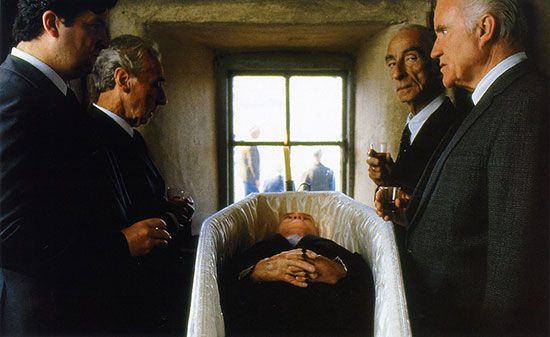Why Is the Vigil Before a Burial Called a Wake?
- Related Topics:
- wake
A wake is a religious rite that traditionally involves mourners staying awake to watch over the body of a deceased person the night before the person’s burial. The term wake has its roots in ancient customs, particularly in the British Isles. The original purpose of a wake was rooted in the belief that evil spirits might harm or even steal the body of the deceased. By staying awake and keeping watch, family and friends could protect the body from such malevolent forces. The Anglo-Saxons referred to this custom as lich-wake, with lich meaning corpse.
This protective aspect of the wake underscores its significance in various cultures, even as the practice evolved over time. With the introduction of Christianity to Britain and Ireland, the offering of prayer was added to the vigil. As a rule, alcohol was offered to the watchers, and many private wakes became social events or occasions for heavy drinking.
Viewing the body is a similar tradition in which mourners pay their respects to the deceased before the funeral or burial. However, whereas a wake can begin days before a burial, a viewing tends to be shorter and often takes place immediately before the funeral service.












